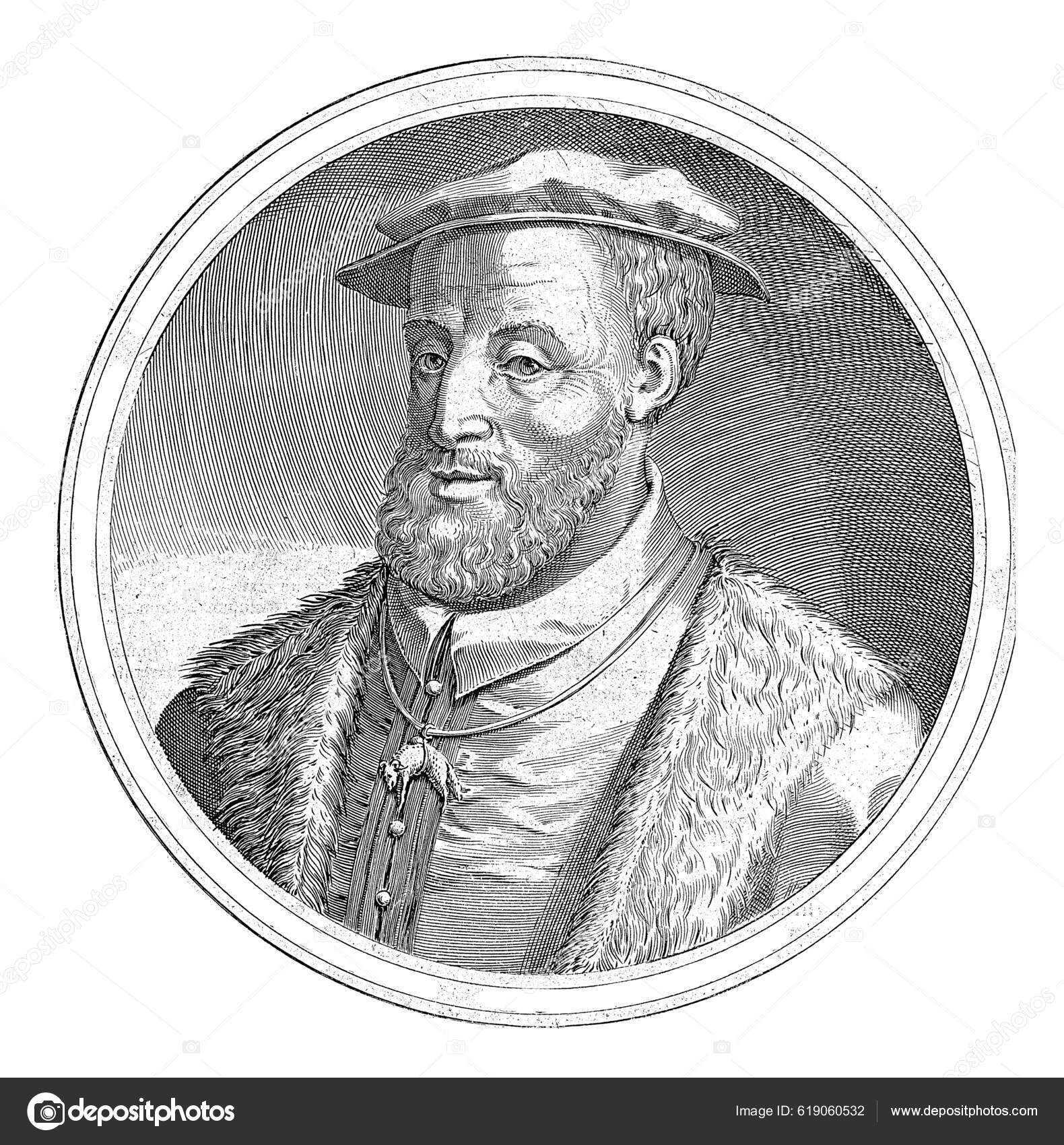From their humble origins in the Swiss Alps to their rise as rulers of the Holy Roman Empire and beyond, the Habsburgs have left an indelible mark on the political, cultural, and social fabric of Europe. Their genealogy is not merely a record of names and dates; it is a tapestry of alliances, power struggles, and remarkable achievements that shaped the course of history. Whether you’re a history enthusiast or simply curious about the roots of European royalty, the story of Habsburg genealogy offers a captivating journey through time.
At its core, Habsburg genealogy is a study of resilience, strategy, and adaptability. The family’s ability to maintain and expand its influence through strategic marriages, military prowess, and diplomatic acumen is a testament to their enduring legacy. Over the centuries, the Habsburgs ruled vast territories, including Austria, Spain, Hungary, and the Netherlands, leaving behind a rich cultural heritage that continues to inspire scholars and historians. Their story is not just about power and conquest; it is also about the intricate web of relationships that connected Europe’s royal families and shaped the continent’s destiny.
As we delve deeper into the Habsburg genealogy, we uncover fascinating tales of triumphs and challenges, of dynastic ambitions and personal sacrifices. The Habsburgs were not immune to the trials of history, and their genealogy reflects the complexities of ruling vast empires in times of war, economic upheaval, and social change. By exploring their lineage, we gain insights into the mechanisms of power, the dynamics of royal families, and the enduring influence of one of Europe’s most storied dynasties. Join us as we embark on a journey to uncover the secrets of Habsburg genealogy and its lasting impact on the world.
Read also:What To Expect From Zoolander 3 A Deep Dive Into The Anticipated Sequel
Table of Contents
- Biography of the Habsburg Dynasty
- How Did Habsburg Genealogy Shape European History?
- What Were the Key Characteristics of Habsburg Rule?
- Habsburg Genealogy and the Politics of Marriage
- Why Did the Habsburg Dynasty Decline?
- The Cultural Legacy of the Habsburgs
- Habsburg Genealogy in Modern Times
- What Can We Learn from the Habsburg Dynasty Today?
Biography of the Habsburg Dynasty
The Habsburg dynasty traces its origins to the 11th century, when the family first rose to prominence in the region of modern-day Switzerland. Over the centuries, the Habsburgs expanded their influence through a combination of military conquest, political alliances, and strategic marriages. Their rise to power culminated in the 15th century when they became the ruling family of the Holy Roman Empire, a position they held for nearly four centuries. Below is a table summarizing key details about the Habsburg dynasty:
| Attribute | Details |
|---|---|
| Origin | Habsburg Castle, Switzerland (11th century) |
| First Prominent Ruler | Rudolf I of Habsburg (1218–1291) |
| Peak of Power | 15th–18th centuries |
| Notable Territories | Holy Roman Empire, Austria, Spain, Hungary, Netherlands |
| Decline | Dissolution of the Holy Roman Empire (1806), end of Austro-Hungarian Empire (1918) |
How Did Habsburg Genealogy Shape European History?
The Habsburg genealogy played a pivotal role in shaping the political and cultural landscape of Europe. Through their extensive network of marriages, the Habsburgs forged alliances that united kingdoms, stabilized regions, and influenced the balance of power. This section explores the ways in which Habsburg genealogy left an indelible mark on European history.
The Rise of the Holy Roman Empire
One of the most significant milestones in Habsburg genealogy was the family’s ascension to the throne of the Holy Roman Empire. Beginning with Frederick III in 1440, the Habsburgs dominated this institution for centuries, using it as a platform to expand their influence across Central Europe. Their leadership during this period was marked by efforts to consolidate power, promote Catholicism, and counter the rise of Protestantism during the Reformation.
A Network of Marriages
The Habsburgs were masters of the political marriage, a strategy that earned them the saying, “Let others wage war; you, happy Austria, marry.” By marrying into other royal families, the Habsburgs secured alliances and expanded their territories without the need for costly wars. Notable examples include the marriage of Maximilian I to Mary of Burgundy and the union of Philip II of Spain with Mary Tudor of England.
Impact on European Borders
These marriages not only strengthened the Habsburgs’ grip on power but also reshaped the map of Europe. For instance, the marriage of Ferdinand of Aragon and Isabella of Castile laid the foundation for the Spanish Empire, which became a global superpower under Habsburg rule. Similarly, the union of Ferdinand I of Austria and Anna of Bohemia and Hungary solidified Habsburg control over Central Europe.
What Were the Key Characteristics of Habsburg Rule?
Habsburg rule was defined by a unique blend of traditionalism, adaptability, and centralization. These characteristics not only sustained the dynasty for centuries but also enabled it to navigate the challenges of a rapidly changing world. Let’s explore the defining traits of Habsburg governance.
Read also:Edward Ruttle A Comprehensive Guide To His Life Legacy And Achievements
A Commitment to Catholicism
The Habsburgs were staunch defenders of the Catholic faith, often positioning themselves as the bulwark against Protestantism and later against secular ideologies. This commitment was evident in their support for the Counter-Reformation and their patronage of religious institutions. The construction of magnificent cathedrals and the sponsorship of artists like Mozart and Haydn reflect their dedication to promoting Catholic culture.
Centralization of Power
Another hallmark of Habsburg rule was their efforts to centralize authority. While the Holy Roman Empire was a loose confederation of states, the Habsburgs sought to strengthen their control over key territories like Austria and Hungary. This centralization allowed them to implement reforms, improve administration, and maintain stability in their realms.
Adaptability in the Face of Change
Despite their traditionalist leanings, the Habsburgs demonstrated remarkable adaptability in response to external pressures. For example, during the Enlightenment, they embraced reforms that modernized their economies and legal systems. Maria Theresa and her son Joseph II were instrumental in implementing policies that promoted education, religious tolerance, and economic development.
Habsburg Genealogy and the Politics of Marriage
Marriage was more than a personal union for the Habsburgs; it was a strategic tool that shaped their genealogy and expanded their influence. This section delves into the intricacies of Habsburg matrimonial alliances and their far-reaching consequences.
Maximilian I and Mary of Burgundy
The marriage of Maximilian I to Mary of Burgundy in 1477 marked a turning point in Habsburg genealogy. By acquiring the wealthy and strategically important Burgundian territories, the Habsburgs gained a foothold in Western Europe. This alliance laid the groundwork for their future dominance in the region.
The Spanish Connection
Perhaps the most famous Habsburg marriage was that of Philip the Handsome and Joanna of Castile, which united the Austrian and Spanish branches of the family. Their son, Charles V, inherited an empire that spanned the Americas, Europe, and parts of Africa, making him one of the most powerful rulers in history.
The Risks of Inbreeding
While the Habsburgs’ reliance on marriage as a political tool brought them immense power, it also had unintended consequences. Centuries of inbreeding led to genetic disorders and health issues, most notably in the Spanish branch of the family. The infamous “Habsburg jaw” became a symbol of the dynasty’s decline, underscoring the risks of their matrimonial strategy.
Why Did the Habsburg Dynasty Decline?
The decline of the Habsburg dynasty was a gradual process influenced by a combination of internal weaknesses and external pressures. This section examines the factors that contributed to their eventual fall from power.
The Burden of Overextension
One of the key reasons for the Habsburgs’ decline was their vast and unwieldy empire. Governing such a diverse array of territories proved increasingly difficult, especially as nationalist movements gained momentum in the 19th century. The rise of independent states like Belgium and Italy weakened the dynasty’s grip on power.
Economic and Military Challenges
The Habsburgs also faced significant economic and military challenges. Their reliance on outdated feudal systems and their inability to modernize their armies left them vulnerable to more dynamic rivals. The Napoleonic Wars dealt a severe blow to their prestige, culminating in the dissolution of the Holy Roman Empire in 1806.
The End of the Austro-Hungarian Empire
The final chapter of Habsburg genealogy came with the collapse of the Austro-Hungarian Empire at the end of World War I. The empire’s defeat and subsequent dissolution marked the end of Habsburg rule, as the dynasty was forced into exile and stripped of its political power.
The Cultural Legacy of the Habsburgs
Despite their political decline, the Habsburgs left behind a rich cultural legacy that continues to inspire admiration. Their patronage of the arts, architecture, and music has left an indelible mark on European culture.
Architectural Marvels
From the Schönbrunn Palace in Vienna to the Alhambra in Granada, the Habsburgs were responsible for some of Europe’s most iconic landmarks. These structures not only served as symbols of power but also as centers of cultural and intellectual activity.
Musical Patronage
The Habsburgs were passionate supporters of music, commissioning works from composers like Mozart, Beethoven, and Haydn. Their patronage helped Vienna become the musical capital of Europe, a reputation it retains to this day.
Habsburg Genealogy in Modern Times
Although the Habsburgs no longer wield political power, their genealogy continues to fascinate historians and the public alike. Efforts to preserve their heritage and document their lineage ensure that their story remains alive for future generations.
Preserving Habsburg History
Archives, museums, and historical societies play a crucial role in preserving the legacy of the Habsburgs. Institutions like the Austrian National Library and the Habsburg Museum in Vienna house extensive collections of artifacts, documents, and artworks that shed light on the dynasty’s history.
What Can We Learn from the Habsburg Dynasty Today?
The story of the Habsburgs offers valuable lessons about leadership, resilience, and the complexities of power. By studying their successes and failures, we gain insights into the dynamics of governance and the enduring impact of cultural patronage.
Lessons in Diplomacy
The Habsburgs’ mastery of diplomacy and their ability to navigate

